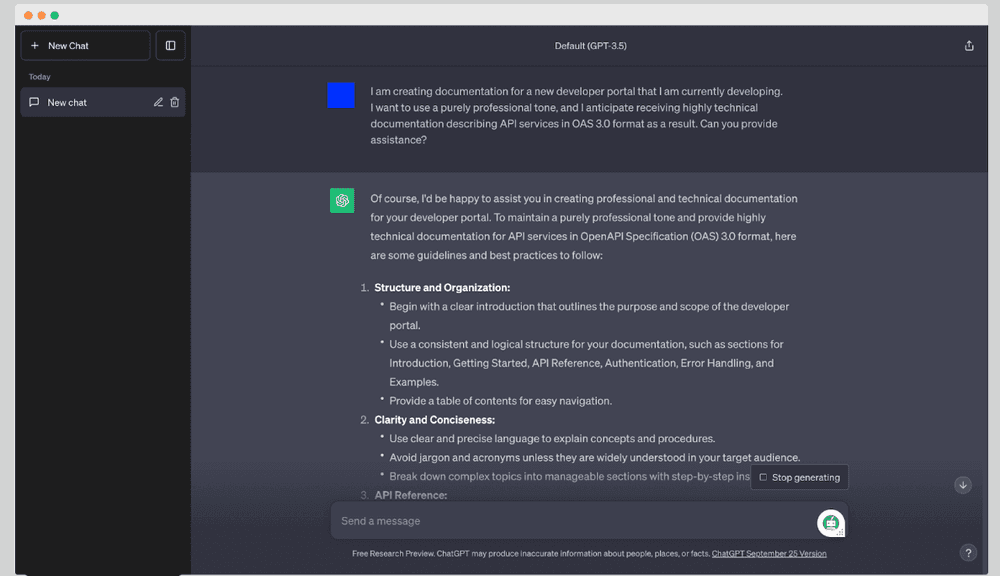Let's talk about AI: #3 AI-Powered Solutions for Real-World Challenges
4. října 2023
The last piece in this series will examine how to use AI technologies to optimize performance on a variety of tasks, including technical writing, marketing, organizing your work, creating graphics, and much more. Let's look at it together.
Let's begin with a real-world use case
The creation and management of is a critical component of what we do at DX Heroes. This presents a wide range of challenges that are directly related to the client's needs. While some clients prioritize completing the visual part first, others focus on obtaining the most detailed possible. At the end of the day, each approach is comparably crucial and requires similar amounts of work.
The required skill set revolves around the abilities of three key project participants: a technical analyst, technical writer, and a programmer. But how does AI fit into this whole story? Let's see.
Creating a developer portal with the help of AI
At the core of every is an that allows anyone with valid permission to use the company's services. On top of that, you should develop a comprehensive set of documentation and specifications for using API services. We already know what needs to be created, based on our experience, to make it as simple as possible for end users. Consider the following scenario: A customer is using an outdated version of the with little documentation or insufficient visuals for the . This is where our work, which is divided into phases, begins:
Modernize
The priority for the first step is to convert the existing solution to the Oformat if it's not done yet. This convention is important for several reasons. The first reason is that technological advancements are moving forward very quickly, and for example, the Blueprint format no longer keeps pace with existing technology standards, while OAS offers the ability to integrate new features more easily and quickly. The second reason is that OAS is already regarded as an industry standard that ensures compatibility, one-door collaboration, and provides countless best practices. As a last point, I would like to mention that OAS provides more robust frameworks for API description, which leads to faster integrations, reduces bugs, and attracts more attention from end users.
Tip for you: My favorite product to convert any kind of API specification is APIMatic –
Resolve
The next step is to resolve any problems that may arise. Like everything in life, nothing always goes perfect, even with an automated migration. All sorts of errors can occur, and manual validation is still required. There are various tools for this; my favorite is Spectral. Spectral basically takes the entire specification and highlights areas where there are errors or warnings. Your OAS is a reflection of the services you offer, so it's very important to ensure that it’s a flawless reflection of the real life state of your product.


